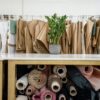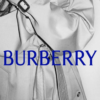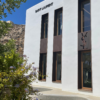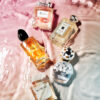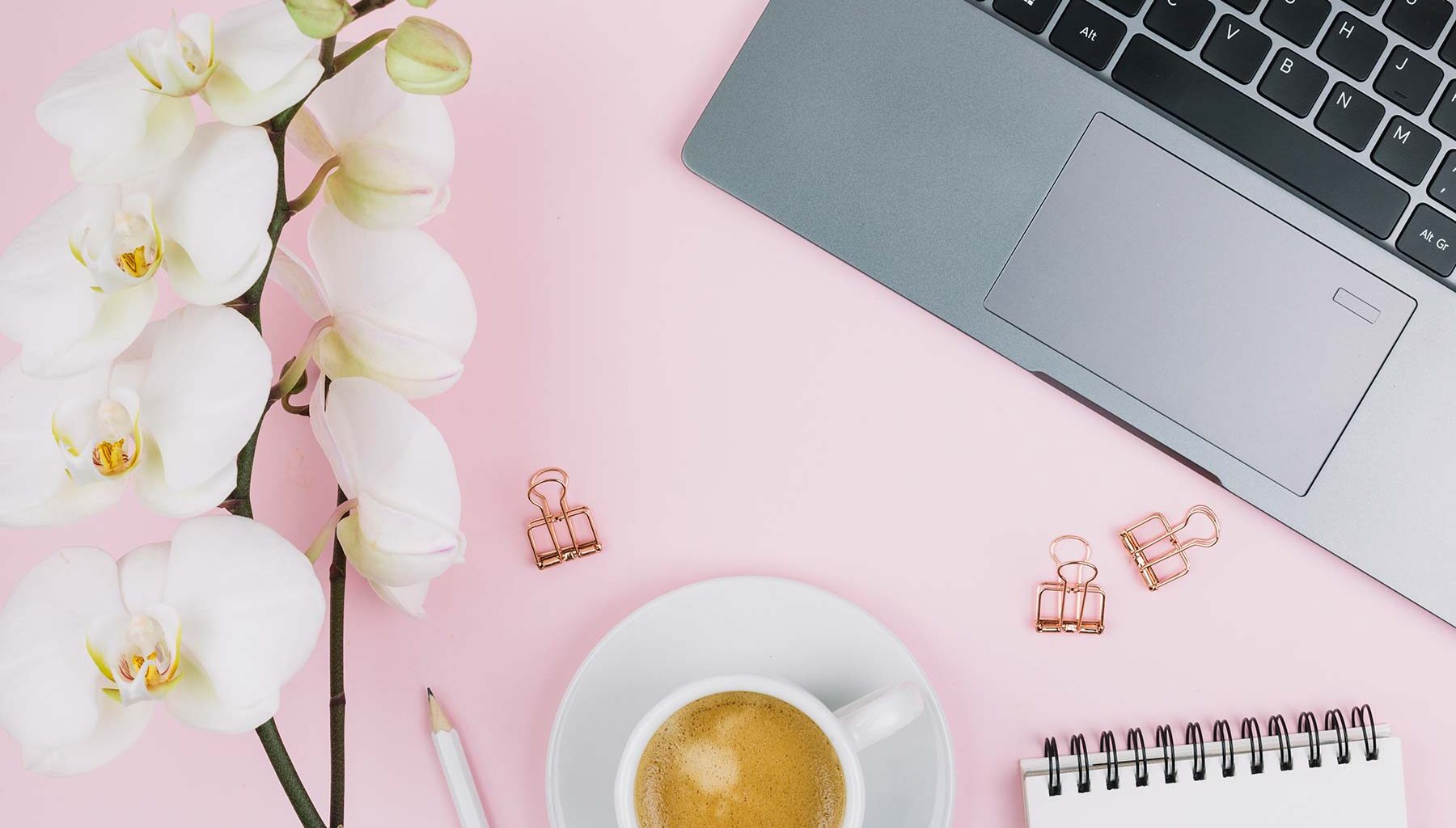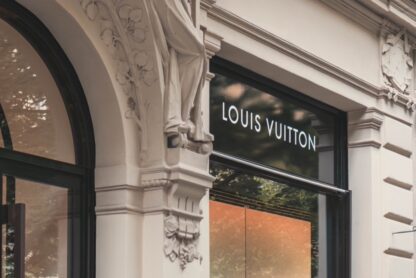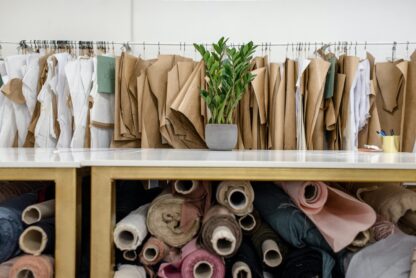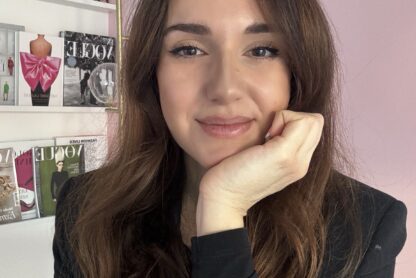Are you looking to get your dream job or internship in fashion? Do you have to build your fashion CV but don’t know where to start?
I know how you’re feeling because I was confused and frustrated as well when I was writing my fashion resume to apply for my first fashion internship.
So, I had no idea about how to build a CV for the fashion industry. I was also lacking confidence because I thought I couldn’t add any relevant information to it. Also, I remember I was thinking: Why would companies want to hire me when they will for sure receive other applications from people with more experience or even better schools?
So, I was about to graduate in management engineering. I opened a Word document and stared in front of it for a while looking at an empty page.
However, I wanted to find a way to build up my resume somehow to show potential recruiters that I was committed to working hard and very interested in fashion. And then, to my big surprise, despite I was a girl with a degree in management engineering, with no connections, not born and raised in a fashion capital, and without previous experience in fashion, I broke into the industry, landing 3 internships – at Fendi, Santoni, and Alexander McQueen. I share more about my experience in this free webinar.
How To Build A Fashion CV
Fast forward 10 years later after my experience in the fashion industry and as a fashion career educator and mentor, I’ve learned many things about how to write a fashion CV that will attract the attention of recruiters. So if you are currently experiencing the same fears and lack of clarity about it, you are in the right place. Let me first reassure you that I was able to land an internship at Alexander McQueen despite my resume being short, so you can too.
Navigating the world of fashion and landing that dream role in this competitive industry requires more than just a passion for fashion. It demands a well-crafted and compelling resume. Your CV is your initial introduction to potential employers, making it a crucial component in your fashion job applications.
Whether you’re a newcomer crafting your first resume or a seasoned professional aiming to transition into the world of fashion, in this blog post, I’ll guide you through the essential elements that make a standout fashion resume, addressing common concerns and helping you present your skills and experiences in a way that resonates with fashion industry professionals. If you’ve been sending out applications and not receiving responses, it’s time to delve into the nuances of creating a fashion-forward CV that sets you apart from the crowd.
Tips on Building a Fashion CV
I always tell my students that the reasons they can’t get a job in fashion can be millions. It’s not necessarily because of their resumes. I also emphasize a lot here on Glam Observer that a resume is not enough to get a job in fashion. However, it is still a very important document in your application.
Having a brilliant resume is the first step to landing a job in fashion. Your CV is your initial introduction to potential employers.
Did you know that on average, 500 resumes are submitted for the same fashion job/internship?
A recruiter spends on average 3 seconds to decide whether your resume deserves a chance or if it’s better to move on to the next one. This means that most of the resumes are not read. So let’s see how to build a fashion CV, one that doesn’t get ignored by companies.
How to Structure Your Fashion CV
What template and format to choose for the CV you send to fashion companies?
You might think that the main key to success is the content of your resume. However, here is the groundbreaking reality: It doesn’t matter what you write in your CV. How it looks at first sight is important. Aka, if the layout and the format are poor.
Fashion is an industry that values aesthetics and cares about appearance, you know that. So together with the content of your resume, the eye wants its part. Therefore, you shouldn’t neglect the visual component when you build your fashion CV.
Crafting a visually appealing and professionally structured fashion CV is a crucial. It’s the first step in making a lasting impression on potential employers. The design of your CV plays a significant role in showcasing your creativity and attention to detail. It also aligns with the aesthetics of the fashion industry. One essential aspect to consider is the template you choose for your resume.
CV Elements
What’s more, if you are at the beginning of your career and don’t have experience yet, recruiters will focus more on other details including the structure of your CV, if it’s well structured or messy – because it’s from those small details that they can understand your personality. Already from your resume template, they can understand if you are an organized person They’ll know if you pay attention to details, or if you are creative.
Your resume is much more than a list of skills and experiences. It represents you, your personality, mindset, creativity, and potential. The layout of your CV says a lot about you and how you present yourself to brands. It is the first impression a fashion company makes about you. So, make sure you do everything in your power to create a good impression.
While creativity is key in the fashion industry, ensure that your CV is easy to read and has a clean, professional layout. Use a legible font and choose a format that allows for clear headings and bullet points.
Your Fashion CV should fit on 1 page only
When structuring your fashion resume, make sure that everything fits on one page. In an industry where creativity and concise communication are highly valued, a one-page CV stands out. It ensures that your most relevant information is easily digestible. Recruiters often have limited time to review each application. Therefore, a concise resume demonstrates also your ability to prioritize and convey essential information. You should not have a lot of work experience at your back. This is the case if you are building your resume to apply for a fashion internship or an entry-level fashion job. So it will be easier to synthesize everything in 1 page. It’s actually from those without experience that recruiters expect more than anyone else a CV that is one page long.
If you can’t fit everything in one page, keep in mind that the information you include on your CV when you apply for fashion internships and jobs should be customized to the specific role you are applying for. So not everything from your past experiences and skills might be relevant. This can save you space as you should give priority only to relevant courses, experiences, and skills for the specific role.
Fashion Resume File Format
Save your fashion CV as a PDF before sending it to ensure that the formatting remains consistent across different devices and software. PDFs are also preferred by many recruiters for their compatibility and professional presentation. This is important because if you send it in another format, say Word, you might risk the recruiter having reading issues and trash it quickly despite your profile matching the job perfectly.
Customize your CV for the specific fashion job or internship
You have to understand this important concept: customize your fashion resume to match the fashion job or internship. Learn this before sharing tips on how to build your education, experience, and skill section. Students in my online course Break into the fashion industry say that the one of mistakes they were making was not tailoring their resume to the position. Many people just build one single version of their resume and submit the same to all the jobs. But this is a HUGE mistake. Different jobs have different requirements in terms of skills and experience. So, you need to tailor your CV to the specific position. Yes, even if you are at the beginning of your career. Especially if you might believe you can only add a few skills.
Don’t fall into the trap of adding not-relevant experiences such as babysitting, or working at a supermarket, or a restaurant. Though they were valuable experiences in your life, you shouldn’t include them just for the sake of filling up the space. You may believe the more you have the better, but remember: quality over quantity. It’s better to have a few things that are very relevant to the position. Don’t add 20 skills or experiences that are irrelevant.
The best way to customize your fashion CV is by including the keywords mentioned in the job offer.
Companies use a tool called “Applicant Tracking System” ATS, that scans the application for the keywords they are looking for. So if you don’t list a keyword by mistake and your resume is rejected, it would be too bad, right? Imagine instead that recruiters immediately spot a keyword inside your CV. In that case, you have caught their attention. You’ll be among the few resumes they will actually read with intention. So, you’ll be among the 2% of people who get a job interview!
For this reason, I always recommend reading the job description carefully and searching for the keywords. By doing this exercise, you will know exactly what information to include. Also, you’ll know how to say it correctly by using the right keywords. It doesn’t mean all the words you use have to be the same. You can rephrase some of them so that your resume doesn’t look like a copy-paste.
What to include in a Fashion CV?
Your Education
When you don’t have experience yet, show off your degree or the university you’re attending. Therefore, it needs to be the most important part of your resume. Even if you didn’t attend a fashion school, any degree you took or are still taking is a LOT of hard work. It takes many years of your life that you should be proud of. Include the name of the institution, degree earned, graduation date, and any relevant honors or awards.
Don’ worry if you’re a recent graduate or have limited work experience. Emphasize your coursework, projects, and relevant skills gained during your studies. For example, if you are studying marketing or communications and you have classes in Digital, Social Media, Marketing, and Project Management. Then, you are about to apply for a role in social media, PR, or fashion marketing, then add those relevant classes as a list of bullet points. Or if you are attending a fashion school, you can add the most relevant classes according to the position you are about to apply for.
How to build your Fashion CV when you don’t have experience
If you have no previous experience, besides your Bachelor’s or Master’s degree, you can fill out your resume with some fashion-related content by taking some online fashion courses. Yes, online fashion courses can be added to your resume as well if they provide a certification. You can either add them to the education section or create a separate section, this will make your resume look longer and allow you to add relevant keywords.
Add the title of the course, the name of the university/institution where you took it, and the date when you received the certification. Use bullet points to describe what you learned in the course, practical projects you took, and what skills you gained so the recruiter can see how you could apply the knowledge gained during your fashion job/internship.
When I was enrolled in a master’s of luxury fashion management, it didn’t stop me from taking some online fashion courses. I was so passionate about the industry. And guess what – that was enough to get me my first internship!
The recruiter told me that she wasn’t so impressed by my master’s in luxury fashion management because nowadays, almost everyone has a degree. The online fashion courses I took, on the other hand, weren’t compulsory and I decided to take them by myself. They served as proof of my deep interest in fashion, as well as my commitment to continuous learning outside formal education.
The combination of a well-crafted resume, online courses, and other unconventional strategies to demonstrate to recruiters I had potential, is something that I teach in the Break into the fashion industry course that has helped thousands of fashion enthusiasts land their first job in fashion. If you want to get a glimpse into my teaching style, you can also start with my free webinar.
As a student or recent graduate, you may feel like you have very little information to include on your resume. However, this is totally okay, my dear friend. It’s okay to have a short resume when you are looking for your first fashion internship. I got my first fashion internship at Alexander McQueen and I had no previous experience in fashion!
The problem is that many times, because we lack confidence, we don’t even see that we actually do have experience. You’d be surprised about how many interesting and more relevant things you can add to your resume even if this will be your first job, just from your personal experiences, school projects, and even personal projects that you saved on your computer!
Fashion-related work experiences you can add to your CV when you are a beginner
For those who may not yet have traditional job roles under their belt, there’s still a multitude of small-scale experiences within the fashion realm that can be strategically woven into a compelling narrative.
“Experience” does not mean having a full-time 9-5 job or being paid for it. No, it refers to any experience you had in your life – big or small. It can be any student job, volunteering, freelance work, and of course – internships.
Even the smallest experiences matter. For example:
Sales Assistant
If you’ve had the opportunity to work even briefly, at a local boutique, include it on your resume. Describe your responsibilities, such as assisting customers, managing inventory, or contributing to visual merchandising.
Volunteer backstage during fashion week
mention any volunteer work at fashion events, such as assisting with runway shows, helping backstage, or contributing to event planning. Emphasize your ability to work in a fast-paced, dynamic environment.
You run your fashion blog or Instagram profile
If you have a personal fashion blog or have managed fashion-related social media accounts, highlight these experiences. Discuss the content you created, engagement metrics, the skills in using CMS platforms, and any collaborations or partnerships you’ve established.
Freelance Work
If you’ve taken on any freelance projects or gigs as a photographer, stylist, social media manager, writer, or editor, even on a small scale, include them on your resume. Highlight the tasks you performed, the skills you utilized, and any positive outcomes or feedback received.
Internships or Apprenticeships
If you’ve participated in internships or apprenticeships, no matter how short, list them on your resume. Mention the tasks you were involved in, the skills you developed, and any notable achievements during these experiences.
Personal Projects
Whether it’s managing social media accounts, or designing your clothing line, add these to your resume to demonstrate your initiative and skills gained through these endeavors.
You should list your experiences in chronological order. The most recent ones should always be on the top. Then, the most old ones should be at the bottom of the list.
I also want to drive your attention to the fact that listing your experiences in chronological order doesn’t mean you should include everything. As I said, you should only include in your resume experiences that are relevant to the specific position you are applying for.
What skills to add to your fashion CV?
As much as listing all your previous experiences is not a good idea, neither is listing all the skills. Add to your fashion CV only the skills that are relevant to the position; they are always mentioned in the job description.
For example: if you are applying for an internship in fashion buying, Excel and an analytical mindset should be at the top of your list. If you know how to use WordPress or Photoshop, they are not very relevant for the fashion-buying job, but if you still wish to include them, then make sure to leave them at the bottom. So it’s not only about the skills themselves but also the order in which they are presented.
Or if you want to become a fashion journalist, your skills section should include relevant skills such as writing, content creation, blog writing, SEO writing…
Make sure to indicate your level of proficiency next to each skill.
For example, don’t just write “Microsoft Office package”, but specify if you know it on the basic, intermediate, or advanced level, and of which program exactly (Word, Excel…). Likewise, don’t just say that you know English, French, or Italian but specify if you are fluent, fluent-to-be, or if you just started learning it.
I believe in the power of transferable skills you gained at school, university, your past experiences, and life in general, and I encourage you to use them when you think you have nothing to offer to fashion companies with no fashion degree and experience in the industry. However, I invite you to do this wisely, as not all your the degrees you took, the jobs you did, and the skills you gained will be useful for every position.
Read here the article about how to build the skills section of your fashion resume.
Add contact details
Don’t forget to include your contact details in the CV so that the recruiter can reach out to you if they like your application. Contact details should include your email (make it professional with your full name – no high school sweet names), phone number, any social media profiles (LinkedIn and Instagram are enough), and your website/blog if you have one. Add your address as well.
Should I add a photo to my CV?
This is a topic that is often a subject of dilemma. Some people advocate that the photo shouldn’t be included in the CV to avoid discrimination, but I personally think a photo is a powerful tool to create a connection with the person who reads your resume. Having experience in hiring people myself, I can tell that it’s nice to put a face on the application as it feels more personal. So unless the company specifically mentions submitting a CV without a photo, I always recommend including one.
Take a professional one though. Use your smartphone to take a bright photo from your shoulders and smile a bit to appear friendly.
How to organize the content of your Fashion CV?
Hooray – you are done preparing all the necessary info for your fashion CV! But you can now be left with the question: How do I organize all the sections?
Well, it’s totally up to you and depends on the template you choose. You can also play with the layout depending on the position you are applying for, as well as your years of experience, and the amount of skills and relevant degrees you have.
If you have experience, I recommend putting work experience first because that’s what companies value most nowadays because a bachelor’s and master’s is no longer a rare thing, so they are looking for practical things like personal projects, online courses, experience, and skills that can make you stand out among other candidates.
Some resume templates are built to give more importance to the work experience so it’s on top and then the education is below or on a smaller column. But if you have little experience, it’s wise to put your education on top then, because this is the most important thing you have on your resume at this stage of life, and that is absolutely normal and acceptable.
How you organize your sections will also depend on the type of job you are about to apply.
If it’s an internship, then it makes sense that the education section is on top, but if you apply for a full-time job, even if it’s entry-level, then it would be a good idea to mention the experience first. As to the skills and contact details, you can either leave them at the bottom of the page, or in a column if you choose to divide the page of your CV into two columns (which is my favorite because it’s easier to navigate through the text). Some people also like the approach of putting the skills at the top of the CV to catch the attention of the hiring manager.
There is no single way of building a CV. It’s a matter of personal taste and how you think is better to organize the information, and which one looks more readable and professional to you. There are plenty of different CV templates, so feel free to experiment and choose the most convenient layout for you.
Proofread your CV
A common reason why many CVs end up in the “no” pile before the recruiter even reads them is typos, typos, typos. If your resume is filled with typos and grammar and syntax errors, it will give the impression that you don’t pay attention to details. As a result, you don’t take this job seriously. It’s as simple as that. This is an issue recruiters don’t compromise on. Therefore, now that you know how to build a fashion CV, make sure you proofread it before sending it. You can ask a friend or your mum if they can read it once for you to have a second opinion.
Is a fashion CV any different from other resumes?
You might think that because you are applying for a job or internship in the glamorous fashion industry, your CV should have some special features. This is a legitimate question, but the answer is: not really. You don’t need to make it in pink and with glitter like Elle Woods from Legally Blonde 😉. Yes, the fashion industry values aesthetics a lot. Hence, the importance of the layout we talked about at the very beginning. If you are pursuing a creative career, you can play with the design even more. But besides that, there are no real differences compared to sending your CV to a job in a different industry. The fashion realm values just as much the importance of a professional, clean, and well-organized resume.
Now you have all the elements in your hands to build the perfect fashion CV. If you want to learn what other application tools are essential to break into the fashion industry in 2024, register for my free webinar here.
